Musíte být přihlášen
-
WróćX
-
Komponenty
-
-
Category
-
Polovodiče
- LED diody
- Tyristory
- Elektroizolační moduly
- Přemosťovací usměrňovače
-
Tranzistory
- Tranzistory | GeneSiC
- SiC MOSFET moduly | Mitsubishi
- SiC MOSFET moduly | STARPOWER
- Moduly ABB SiC MOSFET
- Moduly IGBT | MITSUBISHI
- Tranzistorové moduly | MITSUBISHI
- Moduly MOSFET | MITSUBISHI
- Tranzistorové moduly | ABB
- Moduly IGBT | POWEREX
- Moduly IGBT | INFINEON (EUPEC)
- Polovodičové prvky z karbidu křemíku (SiC)
- Przejdź do podkategorii
- Ovladače brány
- Bloky napájení
- Przejdź do podkategorii
- Měniče proudu a napětí LEM
-
Pasivní součásti (kondenzátory, rezistory, pojistky, filtry)
- Rezistory
-
Pojistky
- Miniaturní pojistky pro elektronické obvody řady ABC a AGC
- Trubkové rychle působící pojistky
- Pojistkové vložky s časovým zpožděním s charakteristikami GL / GG a AM
- Ultrarychlé pojistkové články
- Rychle působící pojistky (britský a americký standard)
- Rychle působící pojistky (evropský standard)
- Pojistky pojezdu
- Pojistkové vložky vysokého napětí
- Przejdź do podkategorii
-
Kondenzátory
- Motorové kondenzátory
- Elektrolytické kondenzátory
- Filmové kondenzátory
- Výkonové kondenzátory
- Kondenzátory pro stejnosměrné obvody
- Kondenzátory korekce účiníku
- Vysokonapěťové kondenzátory
- Indukční topné kondenzátory
- Kondenzátory pulsu a energie
- DC LINK kondenzátory
- Kondenzátory pro AC / DC obvody
- Przejdź do podkategorii
- EMI filtry
- Superkondenzátory
- Přepěťová ochrana
- Filtry pro odhalování emisí TEMPEST
- Svodič přepětí
- Przejdź do podkategorii
-
Relé a stykače
- Teorie relé a stykačů
- 3fázová střídavá polovodičová relé
- 3fázová střídavá polovodičová relé
- Regulátory, ovládací prvky a příslušenství
- Měkké spouštění a reverzační stykače
- Elektromechanická relé
- Stykače
- Otočné spínače
-
Jednofázová střídavá polovodičová relé
- Jednofázová střídavá polovodičová relé, 1 řada | D2425 | D2450
- Jednofázová střídavá polovodičová relé řady CWA a CWD
- Jednofázová střídavá polovodičová relé řady CMRA a CMRD
- Jednofázová střídavá polovodičová relé řady PS
- Dvojitá a čtyřnásobná střídavá polovodičová relé řady D24 D, TD24 Q, H12D48 D.
- Jednofázová polovodičová relé řady GN
- Jednofázová střídavá polovodičová relé řady CKR
- Jednofázová AC relé na lištu DIN řady ERDA A ERAA
- Jednofázová AC relé pro proud 150 A.
- Dvojitá polovodičová relé integrovaná s chladičem pro lištu DIN
- Przejdź do podkategorii
- Jednofázová AC polovodičová relé pro PCB
- Relé rozhraní
- Przejdź do podkategorii
- Jádra a další indukční součásti
- Radiátory, varistory, tepelné ochrany
- Fanoušci
- Klimatizace, příslušenství pro elektrické skříně, chladiče
-
Baterie, nabíječky, vyrovnávací zdroje a střídače
- Baterie, nabíječky - teoretický popis
- Lithium-iontové baterie. Vlastní baterie. Systém správy baterií (BMS)
- Baterie
- Nabíječky baterií a příslušenství
- Záložní zdroj UPS a vyrovnávací napájecí zdroje
- Převaděče a příslušenství pro fotovoltaiku
- Úschovna energie
- Palivové články
- Lithium-iontové baterie
- Przejdź do podkategorii
- Automatika
-
Kabely, dráty, vodiče, flexibilní připojení
- dráty
- Kabelové průchodky a spojky
- lanka
- Kabely pro speciální aplikace
- košile
-
prýmky
- prýmky byt
- prýmky kolo
- Velmi flexibilní opletení - plochý
- Velmi flexibilní opletení - Round
- Měď opletené válcové
- Mědí štít a válcové
- Flexibilní zemnící pásky
- Opletení válcovité pozinkované a nerezové oceli
- PVC izolované měděné pletivo - teplota 85 ° C
- Ploché pletené hliníkové
- Connection Kit - prýmky a trubky
- Przejdź do podkategorii
- Příslušenství pro trakční
- kabelové botky
- Ohebné izolované přípojnice
- Vícevrstvá ohebná lišta
- Systémy vedení kabelů
- Przejdź do podkategorii
- Zobacz wszystkie kategorie
-
Polovodiče
-
-
- Suppliers
-
Applications
- AC a DC pohony (střídače)
- Automatizace HVAC
- CNC obráběcí stroje
- Energy bank
- Indukční ohřev
- Komponenty pro prostředí s nebezpečím výbuchu (EX)
- Měření a regulace teploty
- Měření a regulace teploty
- Motory a transformátory
- Napájecí zdroje (UPS) a usměrňovací systémy
- Průmyslová automatizace
- Průmyslová automatizace
- Průmyslová ochranná zařízení
- Stroje na sušení a zpracování dřeva
- Stroje na tvarování plastů za tepla
- Svařovací stroje a svářecí stroje
- Těžba, hutnictví a slévárenství
- Tisk
- Tramvajová a železniční trakce
- Zařízení pro distribuční, řídicí a telekomunikační skříně
-
Instalace
-
-
Induktory
-
-
Indukční zařízení
-
-
Servis
-
- Kontakt
- Zobacz wszystkie kategorie
How do temperature sensors work?

The basic parameter measured by electronic systems and monitoring and diagnostic systems is temperature - the main factor that affects the quality of operation and performance of industrial equipment. Temperature measurement is present in small and simple systems and devices as well as in advanced industrial systems.
Maintaining the right temperature of the device allows you to significantly extend its life while protecting it from failure or damage. When preparing a piece of equipment for operation, care must be taken to ensure proper ambient temperature and favourable conditions, as well as a good monitoring system using the best quality components and sensors.
The question remains to be answered: how do temperature sensors work? This largely depends on the type of sensor and its mechanism of operation. Manufacturers also use their own technologies to stand out from the competition present on the market. In this article we will focus on the most popular sensors and describe what they are based on.
Operation of the sensor depending on its type
Thermoresistive sensors
The operation of these sensors is based on the change in resistance as a function of temperature. As the temperature increases, the resistance of the sensor can either decrease or increase, usually nonlinearly. Each sensor has its own thermoelectric characteristics, which are adjusted according to the material used in the sensor. On this basis, we can determine the nature of resistance changes depending on the temperature.
Each thermoresistor has a nominal resistance, i.e. a resistance value at the reference temperature (usually 0 °C) and a specific sensitivity, calculated by the ratio of the resistance at 100 °C to the resistance at the nominal temperature.
Thermoelectric sensors (thermocouples)
The operation of thermocouples is based on the Seebeck phenomenon - the formation of a potential difference at the point of contact of two different metals, which is proportional to the difference in their temperatures. Each thermocouple has different properties that depend on the types of metals used in it. There are specific types of thermocouples, which are outlined in standards related to temperature sensors.
Each thermocouple has different temperature characteristics, therefore, for their proper operation, special control systems are used, which through built-in linearization components, allow for correct reading of the measured temperature. Additionally, systems based on thermocouples are small in size, do not need additional power supply and are reliable.
Semiconductor sensors (thermistors)
Solid-state sensors work in the same way as thermoresistive sensors. The only difference is the sign of the coefficient of resistance change that thermistors can have. There are NTC (negative sign) and PTC (positive sign) thermistors. NTC thermistors are mainly used for temperature compensation in devices and limiting values of inrush currents. PTC thermistors can be found, for example, in signaling systems as protection against overcurrent.
Integrated sensors
The principle of integrated sensors is that the temperature is measured by a measuring element and then processed by circuitry housed in a single integrated circuit enclosure. Semiconductor sensing elements are based on using the base-emitter junction voltage. As the temperature increases, the voltage decreases accordingly. Such sensors are most commonly found in electronic devices to protect their circuits from excessive heating, which can lead to irreversible damage.
Summary
Each temperature sensor is characterized by properties specific to its construction. Depending on those properties, they differ in their operating principle and the way they process input signals. In this way, for each application we will find the type of sensor that best fulfils its role, for example when working indoors or outdoors.
More information about temperature sensors can be found on our website: temerature sensors dacpol.eu.
Související produkty
Související příspěvky
 Now available – DC/DC converters from PREMIUM
Now available – DC/DC converters from PREMIUM
 New release in DACPOL lighting for lathes – Kira covers
New release in DACPOL lighting for lathes – Kira covers




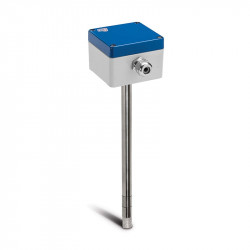
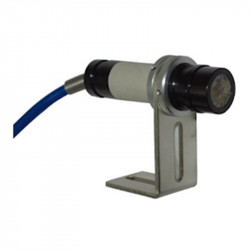
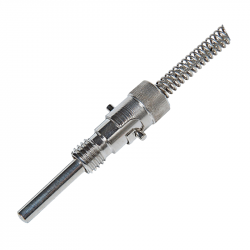
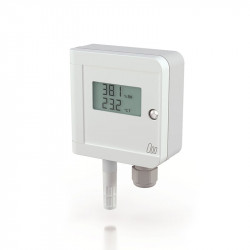
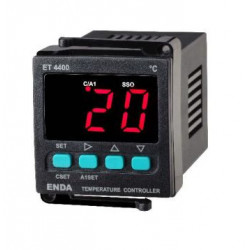
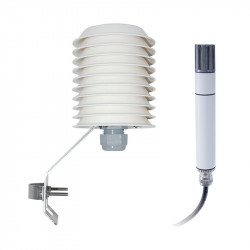
Zanechat komentář